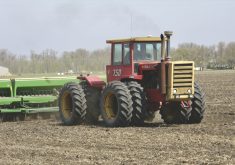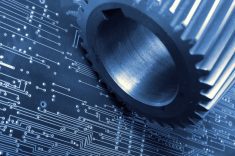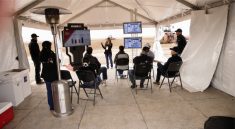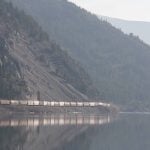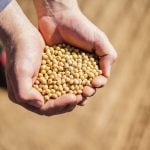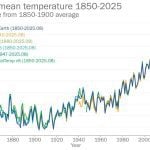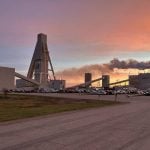The strategy is clear. The company isn’t hiding it. Even in its most recent sustainability report, John Deere says it is going all out to make the world’s farmers happy to invest even more money in green precision ag equipment and new technologies.
But just how much more?
Currently, the brand claims the world’s farmers work roughly 315 million precision acres with Deere machines connected into the John Deere operations centre. It calls those “engaged acres.”
Read Also
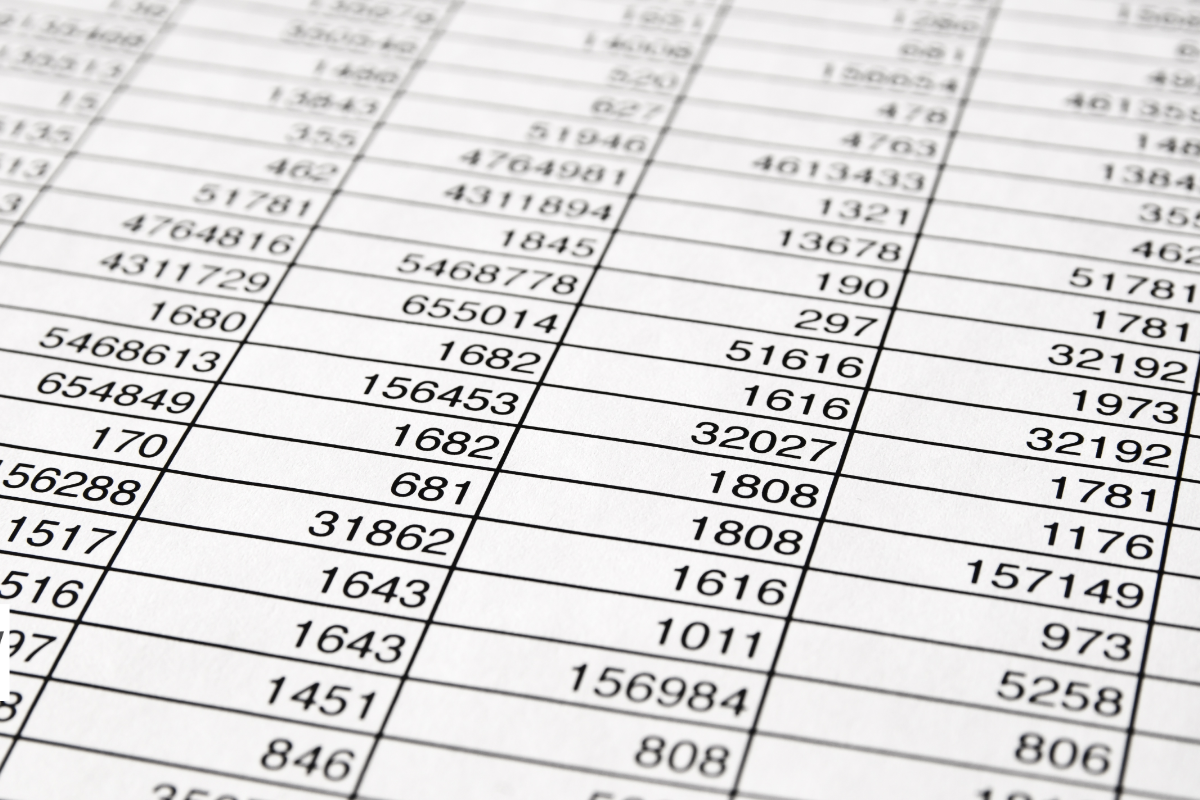
Country Guide November editorial: The now, the next and the numbers
I must admit that when I was younger numbers mystified and frustrated me. In fact, my typically jovial grade six…
Deere’s goal is to push that to 500 million engaged acres by 2026. That’s a jump of about 60 per cent in just four years.
By 2030 it wants to see 75 per cent of those acres “sustainably engaged,” which means they include the “incorporation of two or more sustainable John Deere technology solutions or sustainable practices over a 12-month period.”
The intentionality of all this is amazing, as is Deere’s ability to stick to a game plan and keep running with it.
It was 2020 when John May, Deere’s chairman and CEO, launched the brand’s “Smart Industrial Strategy,” a key part of which is its focus on marketing precision farming products and services to farmers globally. And the thought process was clear.
Deere, said May, had shifted its focus to the future. “I’d like to highlight three near-term opportunities our product road map is focused on: leveraging fleet intelligence, plant level management and autonomy. While we’re proud of the progress made to date, we’re even more excited about the runway of opportunity ahead of us. Throughout our precision technology journey we’ve observed several inflection points where technology advancements unlock new possibilities. Technologies like telematics, cloud computing and more recently edge computing and artificial intelligence have reset the realm of possibilities for Deere.”
In the words of the brand’s sustainability report, its Smart Industrial Strategy focuses on delivering intelligent, connected machines and applications that will revolutionize production systems in agriculture and construction, unlocking customer economic value across the lifecycle in ways that are more sustainable for all.”
Sustainability is a word often used these days by equipment brand executives.
Clearly, environmental sustainability is something that society at large will increasingly demand from all industries, so it makes good business sense to get out ahead of the trend. But there is also one other sensible business reason.
Deere sees an “incremental addressable market opportunity” in sustainability of more than US$150 billion. CEO May apparently sees sustainability as a win-win marketing and strategic direction for the company. That means Deere gets to tout its environmental sensitivity to appease public sentiment, it gets to make more money, and customers improve their productivity. But there’s a catch. For the plan to succeed, farmers need to be convinced that investing in high-tech equipment and support services will actually work for them.
“Our vision is John Deere customers will lead their industries by becoming the world’s most profitable and sustainable businesses,” said May. “No one else is better equipped to deliver this for our customers. Our continued technology advancements allow our customers to make every seed, every drop and every hour count, which makes their operations more sustainable and less intensive on the environment, also saving them time and money.”

Deere’s sustainability plan has been given target milestones to meet besides those engaged acre numbers for large-scale producers. Other business segments will see the affects of the Smart Industrial Strategy too. Within the next four years, Deere will ensure all of its small ag equipment is delivered with connectivity built into it, something rare in any brand at the moment.
There will also be electric power options in all of the brand’s turf and compact utility tractor product lines. And it will introduce an all-electric battery-powered autonomous ag tractor by 2026 too.
That certainly helps explain the company’s February announcement it has acquired majority ownership of Austrian battery manufacturer Kreisel Electric Inc., which has been a pioneer in immersion-cooled battery technology. Kreisel describes itself as a manufacturer of “high-density, high-durability electric battery modules and packs for high-performance and off-highway applications and has created a battery-buffered, high-powered charging infrastructure platform.”
2026 is also the target date May has set for Deere to introduce more than 20 different electric and hybrid-electric machines in its construction and forestry equipment divisions, along with a number of other precision technology features across those segments.
In round numbers that means the green brand expects to have 1.5 million connected machines at work around the world. In agriculture, there will be a continual ramping up of the level of precision its machines and their digital supports are capable of.
“Ultimately our goal is to know where every single plant is within a field and care for each plant individually, giving it the right nutrients and protection while minimizing wasted resources,” May said. “We see decades of opportunities for each of our core capabilities. Individually, these technology capabilities are advancing in greater functionality, while the ability to stack them creates new possibilities to create even more value for our customers.”
What all of those connected machines linking through the brand’s digital network means is the old-fashioned equipment manufacturing business model is being replaced. No longer is Deere (or any brand) satisfied with its dealers just selling a tractor and waiting for the farmer to come back in a few years to trade it in for a replacement. Going beyond sales off the showroom floor, Deere sees an opportunity for creating continuous revenue streams from owners of its equipment. In fact, the brand expects to grow its recurring revenue stream to 10 per cent of its annual income by 2030.

But will farmers actually see substantial gains for themselves from the precision products. Deere thinks so. It claims they will help producers improve nitrogen fertilizer and crop protection efficiency by 20 per cent by 2030, as well as reduce farmers’ C02 emissions by 15 per cent. The opportunity for customers to increase their efficiency and profits is the draw to bring them onboard with precision products and services.
And don’t forget that sustainability buzzword.
“We quantified how a representative farm ultimately uses less fuel, applies less herbicide and fertilizer and emits less greenhouse gases by just incorporating technologies like AutoTrac section control and ExactEmerge into its operations,” said May.
“We are still just getting started on this journey. We will enable our customers to do more with even less, as well as adapt to the dynamic nature of weather patterns and the global regulatory environment.”
Beyond plans to do more than offer buyers increased efficiency and electric powertrain sources, autonomy figures large in Deere’s vision for the future.
Just before the official release of the autonomous 8R tractor with Bear Flag Robotics technology built into it, May had hinted at its introduction. “Still to come is the stacking of guidance with intelligence to deliver machine autonomy,” he said. “We have countless other examples like this in our innovation road map, giving us optimism that we are uniquely positioned to lead
Overall, May’s message is that Deere will push the limits of technology. That’s the aspect of the company’s Smart Industrial Strategy farmers will see as the brand moves into the future, and as it seeks to not only maintain a leadership position in the market but put some more distance between it and its competitors.
The Deere herd
In 2019 John Deere launched its Startup Collaborator program. It was designed as a kind of mentorship program allowing some startup tech companies to work closely with the brand to help develop marketable technologies. Most notable among firms that have participated in it is Bear Flag Robotics, which was recently purchased by Deere and whose technology now forms the basis for the autonomous 8R tractor due for market release later this year.
“The Startup Collaborator program shows that part of our investment in technology is establishing a mechanism to help external ideas and knowledge collide with ours,” explains Julian Sanchez, director, emerging technology for John Deere. “Agriculture is a domain ripe for technology pioneering, and the Startup Collaborator program is a way to travel that journey together with others.”
This year the green brand announced it has admitted seven new companies to the program, and what each of those companies focus their R&D efforts on is telling. It certainly confirms the high tech direction favoured by Deere chairman and CEO John May.
Among them is CropZone.com, which is working on an “electrifying solution available to every grower looking for a sustainable and reliable solution to control weeds and desiccate crops without residue.”
Other startups are focusing on automation, image sensing and a virtual reality system. Nor is that all. Yard Stick, is developing low-cost, instant, in situ soil carbon measurement technologies to enable gigaton per year carbon removal via agriculture. Nothing, apparently is too small to be made big.




